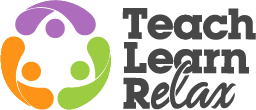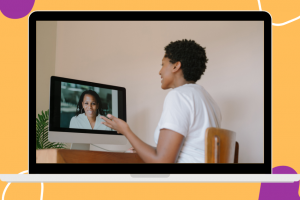These five tasks are designed to foster teamwork, understanding, and a supportive learning environment. They also allow you to get to know your students better and collate information for Group Profiles.
The activities require no preparation but offer incredible flexibility. Adapt them to your unique classroom dynamics to promote meaningful interactions. With prompts and guiding questions, these tasks spark engaging discussions that will help us learn about each other’s strengths, aspirations, and perspectives.
For some tasks, you may want to consider following up by creating a notice board where students can summarise their insights and showcase visual motivation to keep them inspired throughout the year.
And as you conclude each task or session, encourage your learners to finish on a positive note. Invite everyone to share positive feedback with classmates or express gratitude.
- Letter/Email to Your Future Self
Purpose: This icebreaker activity serves multiple purposes. It encourages introspection, goal-setting, and positive self-affirmation. It also creates a sense of anticipation as students look forward to reading their letters and reflecting on their growth throughout the academic year. This task is a wonderful opportunity for students to connect with their future selves, set intentions, and track their progress over time.
Step 1: Decide what the form of the text will be, and if it is going to be a letter, what will a safe place be to store them at.
Step 2: Explain the task. Students will write a letter to their future selves, which will be read at the end of the academic year. These letters are personal and don’t need to be shared with others.
Step 3: Encourage reflection. Ask students to reflect on their goals, aspirations, and expectations for the upcoming year. They can think about personal growth, academic achievements, challenges they hope to overcome, and what they want to remember.
Step 4: Provide examples. Share examples like congratulating themselves for accomplishments, offering advice on handling challenges, and expressing excitement about upcoming events or subjects.
Step 5: Give students time to compose their letters.
Step 6: Collect the letters and store them in a safe place to be returned at the end of the year.
2. Getting to Know Each Other
Purpose: This activity encourages open communication, builds rapport, and creates a positive classroom environment. Students can connect on shared interests and discover new things about their peers and teacher. By asking questions that delve into various aspects of each other’s lives, students foster a sense of connection and community from the start.
Step 1: Begin by explaining the purpose of the activity. Students will have the opportunity to ask their teacher and classmates questions to get to know each other better.
Step 2: Set ground rules. Emphasize that questions should be respectful, relevant, and appropriate for a learning environment. Encourage an inclusive atmosphere where everyone feels comfortable sharing.
Possible topics to explore:
- Course-related: favourite topics, what’s exciting, reasons and purpose of doing/teaching the course
- Interests
- Future plans
- Previous experiences and memories
- Challenges
- Routines and motivators
- Interesting and inspirational stories
- Surprises
Step 3: Divide students into pairs or small groups.
Step 4: Gather the class and encourage volunteers to share some interesting insights they learned about their classmates. Alternatively, ask students to write their questions down, put all of them together, and ask each learner to pick one question and read it to the class.
3. Sharing Expectations
Purpose: This icebreaker fosters open communication, accountability, and a shared sense of responsibility. By setting clear expectations and discussing how each individual can contribute positively, students take ownership of their learning environment. It also sets a tone of collaboration and respect from the very beginning of the course.
Step 1: Begin by explaining the purpose of the activity. Students will share their expectations for the a) course, b) teacher, c) classmates, and d) themselves.
Step 2: First, give students some time to think and jot down their thoughts. Divide students into small groups.
Step 3: Give students time to discuss and write down their thoughts. To keep the discussion going, provide prompts for each expectation:
Course: What do you hope to learn or achieve in this course? How can this subject help you in the future? How will you ensure you stay engaged even when the subject gets challenging?
Teacher: What qualities or teaching methods do you hope the teacher brings to the classroom? How can the teacher support your learning journey? What proactive steps can you take if you need additional help or clarification from the teacher?
Classmates: How can your interactions with your classmates enhance the learning experience? What kind of collaborative environment would you like to create? How will you promote inclusivity and respect among your peers, even when differing opinions arise?
Yourself: What personal strengths will you bring to the class? How can you actively contribute to a positive and engaging classroom atmosphere? How will you hold yourself accountable for your learning goals throughout the course?
Step 4: Share and discuss. Each group shares their expectations, and the whole class discusses common themes and ideas. Decide where you want to record the common points, so you can refer to them as the courses progresses.
4. Shared Language Exploration
Purpose: This activity not only promotes shared understanding and a sense of community but also introduces the concept of growth mindset. By discussing common terms and reflecting on their own interpretations, students become more aware of their attitudes toward challenges, effort, and learning from mistakes. This paves the way for embracing a growth mindset approach throughout the academic year.
Step 1: Begin by explaining the purpose of the activity. Students will share common phrases or terms and discuss what they mean to them.
Step 2: Divide students into pairs or small groups.
Step 3: Provide a list of common phrases or terms related to growth mindset, like challenge, resilience, effort, learning from mistakes, perseverance, and progress. Ask students to add their own examples, such as new words or the words the meaning they may be confused about.
Step 4: In their pairs or groups, students take turns sharing their understanding and personal connection to each term. For example:
- What does … mean to you?
- Can you recall a time when … led to growth?
- How do you define/interpret …?
- Why is … important in learning?
- How can … help us improve?
- Can you share any personal examples?
- What does … look like in your learning journey?
- How can we measure and celebrate …?
- How can you approach/apply/maintain …?
- What strategies can you use to …?
Step 5: Share insights. After group discussions, gather the class and encourage students to share some of the insights they gained from their peers.
- How has this task change your understanding of …?
- What have you learned?
- What surprised you? Why?
5. Exploring Teamwork Approaches
Purpose: This activity promotes self-awareness and understanding of different teamwork approaches. It fosters empathy and helps students recognize the diversity of strengths within a team. By discussing challenges and learning from past experiences, students can apply effective teamwork strategies in future collaborations.
Step 1: Begin by explaining the purpose of the activity. Students will share their individual approaches to teamwork and collaboration.
Step 2: Ask each student to share a personal experience of working in a team. It could be related to school projects, sports, or any other collaborative effort.
Step 3: Divide students into small groups. Ask students to take turns sharing their experiences and reflecting on their teamwork approach.
These questions will allow the discussions to run smoothly:
- How do you typically contribute to a team? Are you more of a leader, a listener, a planner, or a problem solver?
- Who are you when you are at your best?
- What skills and qualities do you bring to the team?
- How do you prefer to give / receive feedback?
- How do you like to be held accountable?
- How would you like to be recognised for completing a task?
- What motivates you when working in a group? What are you curious about?
- How do you ensure effective communication within a team? Do you prefer to lead discussions, listen actively, or contribute ideas?
- What challenges have you faced while working in a team? How did you overcome them?
- How can you apply the lessons learned from past teamwork experiences to enhance your collaborative skills?
- How do you support your team members when they’re struggling or facing difficulties?
- What have you learned from your teamwork experiences? How have they shaped your understanding of collaboration?
- How can you adapt your teamwork approach to complement others’ strengths and create a balanced team?
- What strategies can you use to ensure everyone’s voice is heard and valued in a team setting?
- How can you approach challenges with a positive attitude and find solutions as a team?
- How will you offer assistance and encouragement to team members without taking over or undermining their efforts?
- What would you like to practise when working in a group?
Step 5: Share insights. After group discussions, gather the class and encourage students to share some of the insights they gained from their peers.
What icebreakers are you planning this year?






Add Comment